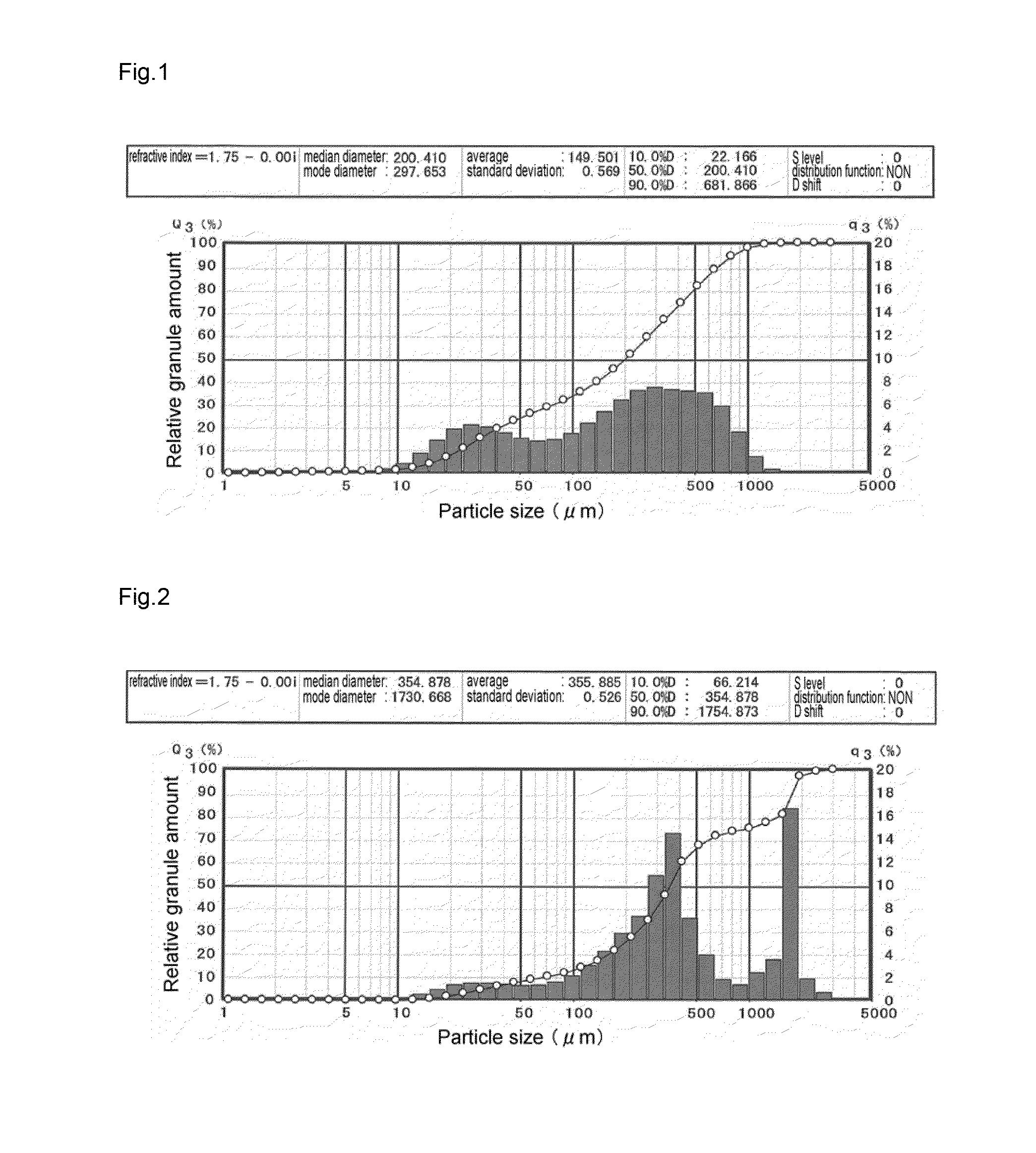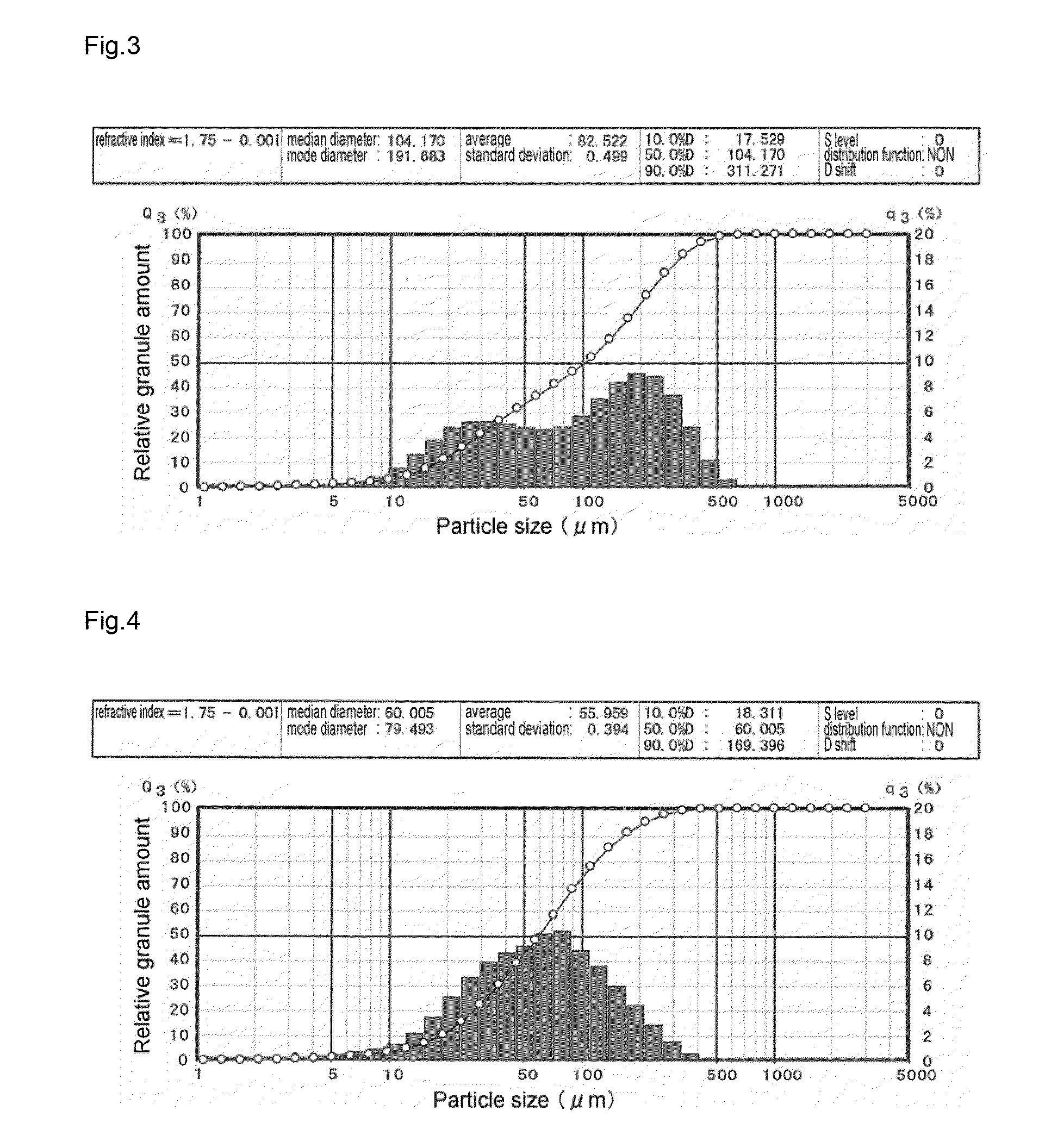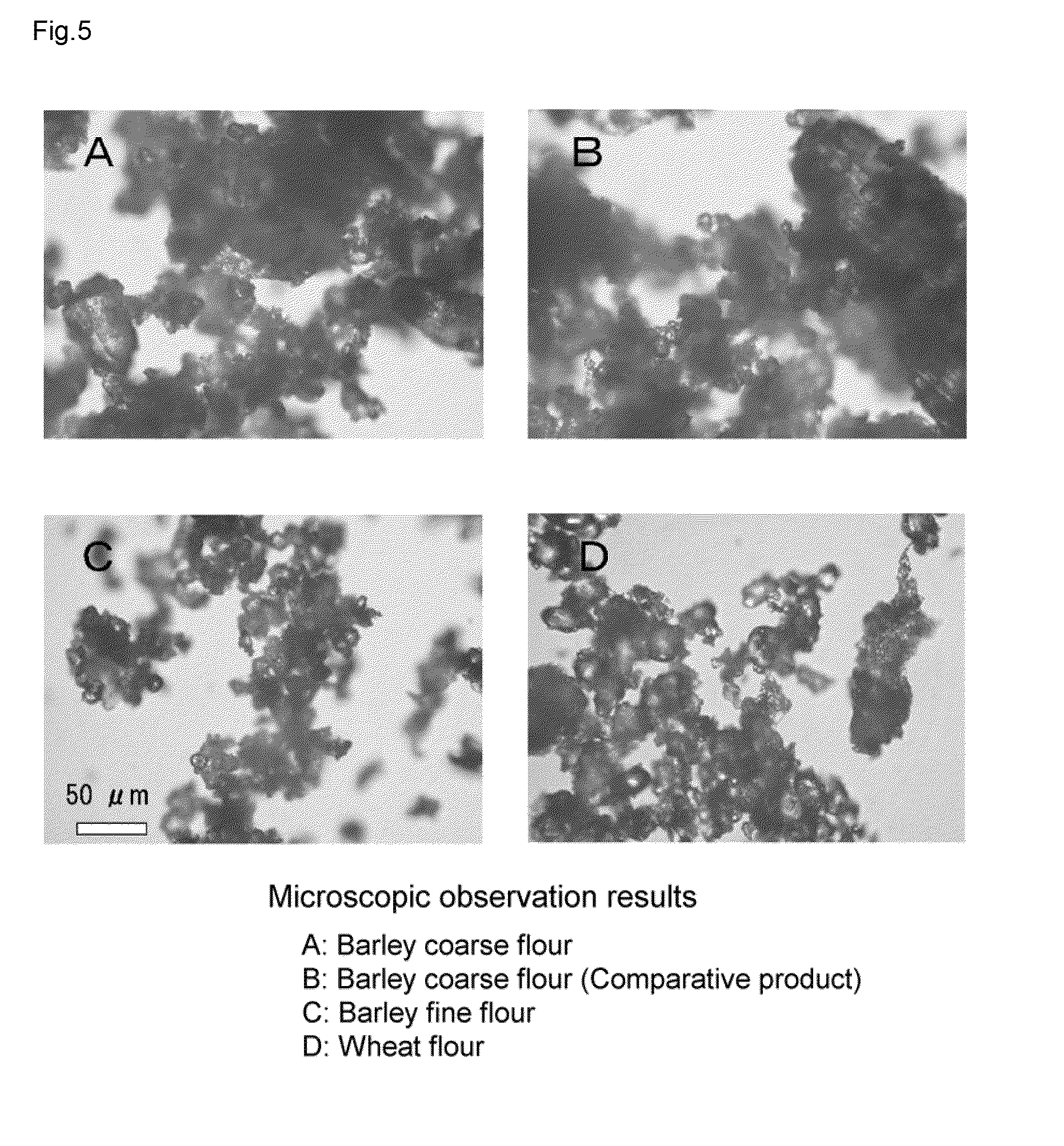Grain flour and applied foods
a technology of grain flour and food, applied in the field of grain flour and to foods, can solve the problems of unresolved problems such as the additional time required for shelling, the hardening of the endosperm cell wall, and the inability to meet the needs of processing, and achieves the effects of destroying the compositional balance of natural components, good dispersion stability, and easy mixing with other food materials
- Summary
- Abstract
- Description
- Claims
- Application Information
AI Technical Summary
Benefits of technology
Problems solved by technology
Method used
Image
Examples
example 1
Preparing Fine Flour C of the Present Invention by Fine Milling of Coarse Barley Flour A
[0087]Polished H. vulgare f. distichon barley was coarsely milled and then milled in a high-speed mill (the screen size employed was 0.2 mm and sifting was conducted with a 60 mesh sifter screen). The coarse barley flour thus obtained (referred to as “coarse flour A” hereinafter; the average particle diameter of the flour was 150 μm, with flour with a particle diameter of 110 μm or less constituting 36%, flour with a particle diameter of 57 μm or less constituting 26%, and flour with a particle diameter of 516 μm constituting 19%) was finely milled with an airstream-type crusher (STAY-S, made by Vane Japan, Inc., blower 10 m3 / min., processing time 10 kg / hr) to obtain fine flour C. The product temperature during the milling step was 35° C. (room temperature 29° C., humidity 74%, exhaust temperature 39° C.). The results of analysis of the general composition of fine flour C did not differ greatly f...
example 2
[0089]Three types of flour were employed: 100% wheat flour; a mixture of 50% wheat flour and 50% fine barley flour C; and a mixture of 50% wheat flour and 50% coarse barley flour A. Water was added in a proportion of 50% of the flour and the mixture was kneaded to prepare dough. The dough was measured with a ZE2000 Color Measurement Color Meter (Nippon Denshoku Co., Ltd.).
[0090]Brown spots were present and an impression of foreign matter was presented by the dough prepared from coarse barley flour A. The dough prepared from fine barley flour C was uniform and presented no impression of foreign matter. The color and difference from white of the dough were measured on day 1 and day 2 following preparation of the dough. The dough prepared from fine barley flour C was close to wheat in color. The dough prepared from coarse barley flour A was more strongly brown. In particular, the brown color intensified with the passage of time. The results are given in Table 4.
TABLE 4Color of doughL(l...
example 3
[0091]Noodles were prepared using barley flour. Six types of grain flour (the blending proportions are given in Table 5) were employed: 100% wheat flour (all-purpose flour); wheat flour with 15% replacement with fine barley flour C; wheat flour with 30% replacement with fine barley flour C; wheat flour with 50% replacement with fine barley flour C; 100% fine barley flour C; and wheat flour with 15% replacement with coarse barley flour A. With the exception of the 100% fine barley flour, 0.8% brine was added to each of these, the mixture was thoroughly kneaded, and noodles were produced by the usual aging method. For the 100% fine barley flour, a paste was prepared with warm water from a portion of the flour, that portion was used to collect the remainder of the flour, and noodles were prepared by the paste method. These noodles were boiled in water, cooled with cold water, and employed in organoleptic evaluation.
TABLE 5Material blending ratio of udon (Japanese noodle) using barley f...
PUM
| Property | Measurement | Unit |
|---|---|---|
| average particle diameter | aaaaa | aaaaa |
| particle diameter | aaaaa | aaaaa |
| particle diameter | aaaaa | aaaaa |
Abstract
Description
Claims
Application Information
 Login to View More
Login to View More - R&D
- Intellectual Property
- Life Sciences
- Materials
- Tech Scout
- Unparalleled Data Quality
- Higher Quality Content
- 60% Fewer Hallucinations
Browse by: Latest US Patents, China's latest patents, Technical Efficacy Thesaurus, Application Domain, Technology Topic, Popular Technical Reports.
© 2025 PatSnap. All rights reserved.Legal|Privacy policy|Modern Slavery Act Transparency Statement|Sitemap|About US| Contact US: help@patsnap.com



